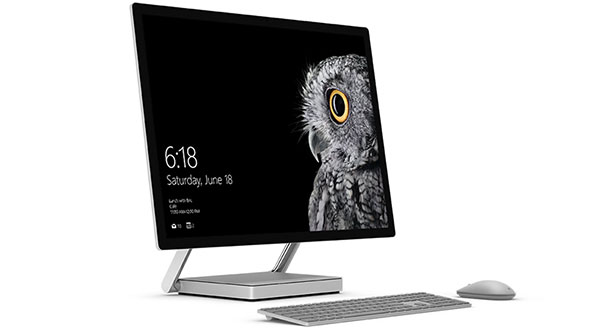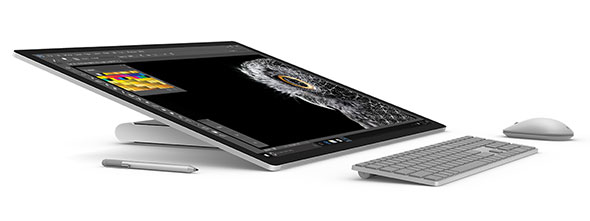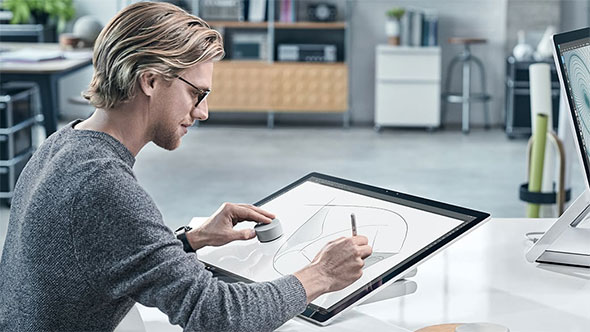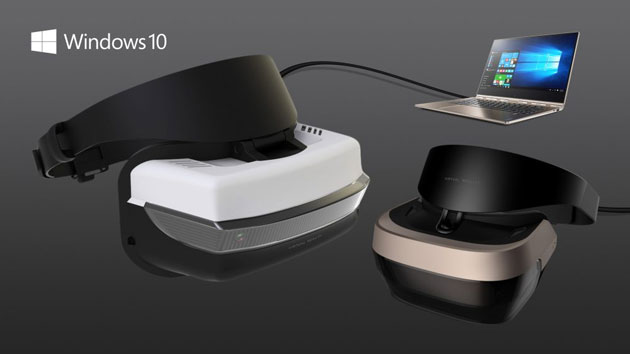New Product Introductions Come As Part of Push for 2017's Windows 10 Creators Update
The Surface Studio, Microsoft's new all-in-one $2,999 touchscreen PC, may have been the marquee item at its Windows press conference today, but the company had a lot of VR announcements. They included word of new Windows VR headsets coming from five different vendors and a 3D-centric Windows 10 Creators Update that includes Paint 3D, which updates the Windows classic pixel-painting tool with 3D depth effects. Even the new version of PowerPoint will include support for importing 3D models.
Microsoft said HP, Dell, Lenovo, Asus and Acer are working on VR headsets for Windows 10 that will start at $299 — cheaper than competing models from Oculus, HTC and Sony. Due in 2017, the Windows-compatible headsets will use built-in sensor technology that doesn't require markers, and will reportedly run the same Windows Holographic software that drives Microsoft's own AR HoloLens. Microsoft said they will work with "affordable laptops and PCs" running the Creators Update — that's likely a dig at the Oculus Rift's fairly high-end system requirements.
The Windows 10 Creators Update is coming in "early 2017," Microsoft said.

Back to the Surface Studio — with the Surface Book and Surface Pro, Microsoft has been getting more aggressive with innovative computer designs, and the Surface Studio is one of its boldest moves to date. It aims to be a real artist's computer. The Surface Studio is built around a 28-inch 10-point multitouch 3:2-aspect-ratio display with 4500×3000 resolution, which Microsoft is describing as "4.5K."

What sets that display apart is the flexibility of its stand. Two arms hold the display up above the computer case for use as a typical desktop monitor. But the Surface Studio also lets users fold the stand down so that the screen is more nearly flat on the desktop — all the better for drawing with a stylus or taking advantage of the touch interface.

And, recognizing that a glassy screen isn't always the best way to interface with a computer program, Microsoft introduced something called the Surface Dial, a sort of standalone knob that can be placed on top of the screen to access a radial tool menu. The Dial includes haptic feedback to make it easier to use. At the Microsoft store, the Surface Dial is currently valued at $99.99 but is shipping free with system preorders.
The Surface Studio can be configured with an Intel Core i5 or i7 processor, up to 32 GB of RAM, and a 1 TB or 2 TB hybrid drive; the high-end graphics option is a not-at-all-shabby Nvidia GeForce GTX 980M with 4 GB of GDDR5 memory.
The Surface Studio starts at $2,999; a fully loaded system as described above runs $4,199. It's expected to begin shipping December 15.
Microsoft: www.microsoft.com
Did you enjoy this article? Sign up to receive the StudioDaily Fix eletter containing the latest stories, including news, videos, interviews, reviews and more.











Leave a Reply